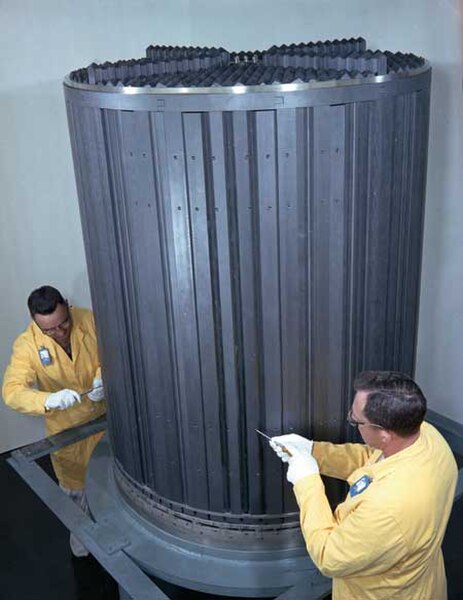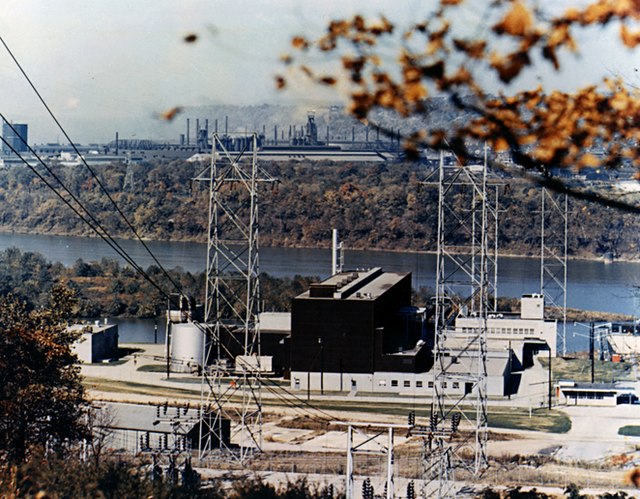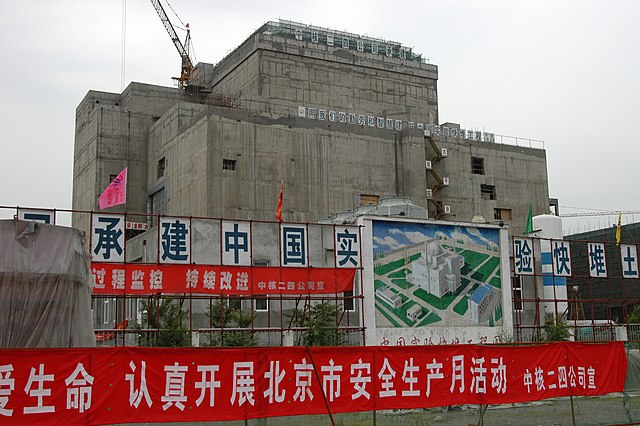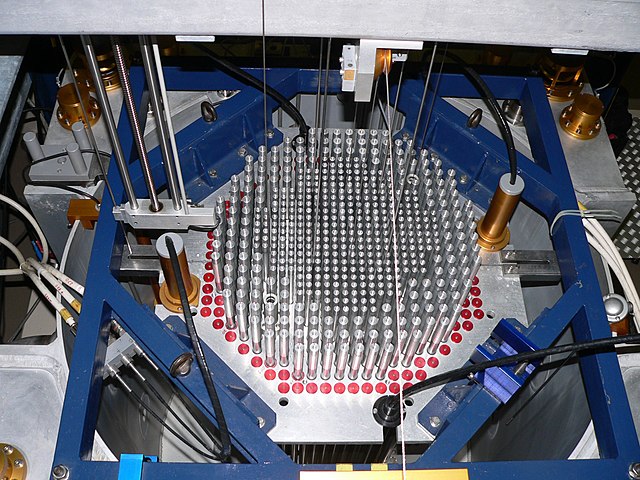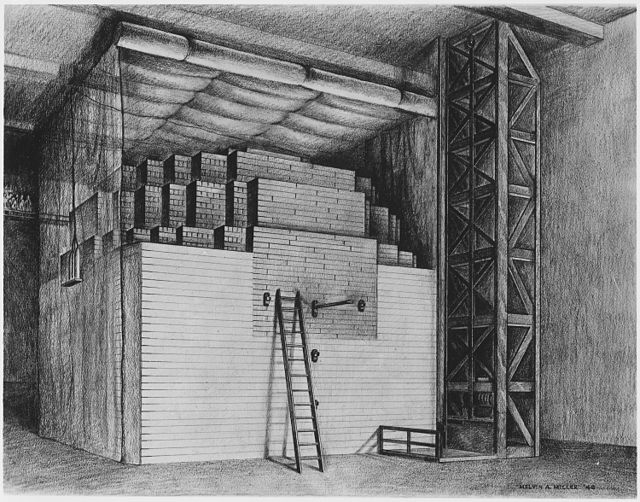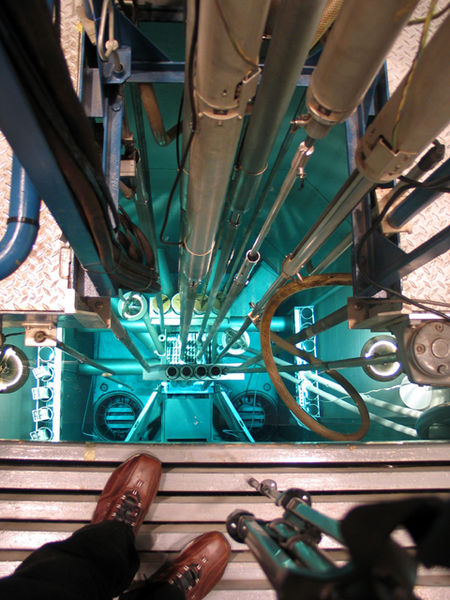A breeder reactor is a nuclear reactor that generates more fissile material than it consumes.
These reactors can be fueled with more-commonly available isotopes of uranium and thorium, such as uranium-238 and thorium-232, as opposed to the rare uranium-235 which is used in conventional reactors. These materials are called fertile materials since they can be bred into fuel by these breeder reactors.
Experimental Breeder Reactor II, which served as the prototype for the Integral Fast Reactor
The graphite core of the Molten Salt Reactor Experiment
The Shippingport Reactor, used as a prototype light water breeder for five years beginning in August 1977
The Chinese Experimental Fast Reactor is a 65 MW (thermal), 20 MW (electric), sodium-cooled, pool-type reactor with a 30-year design lifetime and a target burnup of 100 MWd/kg.
A nuclear reactor is a device used to initiate and control a fission nuclear chain reaction or nuclear fusion reactions. Nuclear reactors are used at nuclear power plants for electricity generation and in nuclear marine propulsion. Heat from nuclear fission is passed to a working fluid, which in turn runs through steam turbines. These either drive a ship's propellers or turn electrical generators' shafts. Nuclear generated steam in principle can be used for industrial process heat or for district heating. Some reactors are used to produce isotopes for medical and industrial use, or for production of weapons-grade plutonium. As of 2022, the International Atomic Energy Agency reports there are 422 nuclear power reactors and 223 nuclear research reactors in operation around the world.
Core of CROCUS, a small nuclear reactor used for research at the EPFL in Switzerland
The Chicago Pile, the first artificial nuclear reactor, built in secrecy at the University of Chicago in 1942 during World War II as part of the US's Manhattan project
Lise Meitner and Otto Hahn in their laboratory
NC State's PULSTAR Reactor is a 1 MW pool-type research reactor with 4% enriched, pin-type fuel consisting of UO2 pellets in zircaloy cladding.


